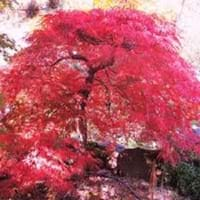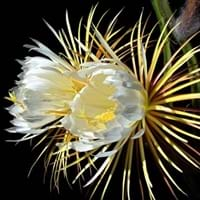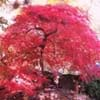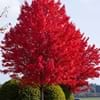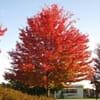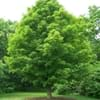Life Span
Perennial
Perennial
Type
Tree
Cactus or Succulent, Perennial
Origin
Eastern Asia
North America, Central America, South America
Types
Ever red , Crimson queen
princess of the night, Honolulu queen
Number of Varieties
Not Available
Habitat
Shady Edge
Desert, Semi desert
USDA Hardiness Zone
5-8
9-14
AHS Heat Zone
8-2
12 - 10
Sunset Zone
A3, 2a, 2b, 3a, 3b, 4, 5, 6, 7, 8, 9, 10, 12, 14, 15, 16, 17, 18, 19, 20, 21, 22, 23, 24
H1, H2, 12, 13, 15, 16, 17, 20, 21, 22, 23, 24
Habit
Arching/Fountain-shaped
Narrow Upright/Fastigiate
Flower Color
Red
Light Pink, White
Flower Color Modifier
Bicolor
Bicolor
Fruit Color
Red, Green
Pink, Purple, Salmon, Violet
Leaf Color in Spring
Light Green, Lime Green
Light Green
Leaf Color in Summer
Green, Lime Green
Green, Dark Green
Leaf Color in Fall
Orange, Gold, Orange Red
Green
Leaf Color in Winter
Not Available
Green
Leaf Shape
Maple shaped
Succulent
Plant Season
Spring, Summer, Fall, Winter
Fall, Spring, Summer, Winter
Sunlight
Full Sun, Partial Sun, Partial shade
Full Sun, Partial Sun
Type of Soil
Clay, Loam, Sand
Loam, Sand
The pH of Soil
Acidic, Neutral
Acidic, Alkaline, Neutral
Soil Drainage
Average
Well drained
Bloom Time
Early Spring, Spring, Late Spring, Early Summer
Late Spring, Spring
Tolerances
Drought
Drought
Where to Plant?
Ground
Container, Ground, Pot
How to Plant?
Transplanting
Grafting, Seedlings, Stem Planting
Plant Maintenance
Medium
Medium
Watering Requirements
Requires regular watering
Average Water Needs, Do not let dry out between waterings, Do Not over Water, Never Over-water, Requires consistently moist soil, Requires regular watering
In Summer
Lots of watering
Lots of watering
In Spring
Moderate
Average Water
In Winter
Average Water
Less Watering
Soil pH
Acidic, Neutral
Acidic, Alkaline, Neutral
Soil Type
Clay, Loam, Sand
Loam, Sand
Soil Drainage Capacity
Average
Well drained
Sun Exposure
Full Sun, Partial Sun, Partial shade
Full Sun, Partial Sun
Pruning
Remove damaged leaves, Remove dead branches, Remove dead leaves
Prune to stimulate growth, Remove damaged leaves, Remove dead branches, Remove dead leaves
Fertilizers
All-Purpose Liquid Fertilizer
fertilize every 2-3 weeks while growing
Pests and Diseases
Red blotch
Scale
Plant Tolerance
Drought
Drought
Flowers
Insignificant
Yes
Flower Petal Number
Single
Semi-Double
Foliage Texture
Fine
Bold
Foliage Sheen
Matte
Matte
Allergy
Unknown
Diarrhea, Nausea, Vomiting
Aesthetic Uses
Beautification, Bonsai, Landscape Designing, Showy Purposes
Beautification, Landscape Designing, Showy Purposes
Beauty Benefits
Not Available
Improve hair condition, Improve skin condition
Environmental Uses
Air purification
Air purification
Medicinal Uses
Unknown
Antioxidants, cholesterol-lowering, Fever, Heart problems, Itching, Menstrual Disorders, Rheumatism, Treat Parasitic Intestinal Worms
Part of Plant Used
Not Available
Flowers, Stem
Other Uses
Not Available
Decoration Purposes, Economic Purpose, Employed in herbal medicine, Medicinal oil, Showy Purposes, Used as Ornamental plant, Used for its medicinal properties
Used As Indoor Plant
No
Yes
Used As Outdoor Plant
Yes
Yes
Garden Design
Container, Feature Plant, Hedges, Mixed Border, Topiary / Bonsai / Espalier
Container
Botanical Name
ACER palmatum 'Omurayama'
CEREUS
Common Name
Japanese Maple, Weeping Japanese Maple
Night blooming cereus
In Hindi
Weeping Maple
cereus
In German
Weeping Maple
cereus
In French
Maple pleureur
cereus
In Spanish
weeping maple
cereus
In Greek
weeping maple
cereus
In Portuguese
chorando de bordo
cereus
In Polish
płacz klonu
cereus
In Latin
weeping maple
cereus
Phylum
Angiosperms
Tracheophyta
Class
Eudicotyledones
Magnoliopsida
Order
Sapindales
Caryophyllales
Family
Aceraceae
Cactaceae
Clade
Not Available
Angiosperms, Core eudicots, Eudicots
Tribe
Not Available
Hylocereeae
Subfamily
Not Available
Cactoideae
Number of Species
Not Available
Not Available
Importance of Weeping Maple and Cereus
Want to have the most appropriate plant for your garden? You might want to know the importance of Weeping Maple and Cereus. Basically, these two plants vary in many aspects. Compare Weeping Maple and Cereus as they differ in many characteristics such as their life, care, benefits, facts, etc. Every gardener must at least have the slightest clue about the plants he wants to plant in his garden. Compare their benefits, which differ in many ways like facts and uses. The medicinal use of Weeping Maple is Unknown whereas of Cereus is Antioxidants, cholesterol-lowering, Fever, Heart problems, Itching, Menstrual Disorders, Rheumatism and Treat Parasitic Intestinal Worms. Weeping Maple has beauty benefits as follows: Not Available while Cereus has beauty benefits as follows: Not Available.
Compare Facts of Weeping Maple vs Cereus
How to choose the best garden plant for your garden depending upon its facts? Here garden plant comparison will help you to solve this query. Compare the facts of Weeping Maple vs Cereus and know which one to choose. As garden plants have benefits and other uses, allergy is also a major drawback of plants for some people. Allergic reactions of Weeping Maple are Unknown whereas of Cereus have Diarrhea, Nausea and Vomiting respectively. Having a fruit bearing plant in your garden can be a plus point of your garden. Weeping Maple has no showy fruits and Cereus has showy fruits. Also Weeping Maple is not flowering and Cereus is flowering. You can compare Weeping Maple and Cereus facts and facts of other plants too.
